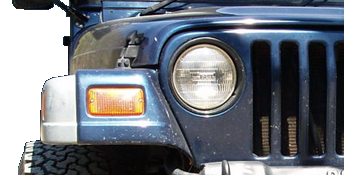The primary spring (bottom) should be 2” longer than the shock travel so that the dual rate stop nuts are in a useable section of travel in their threads on the shock body.
Generally these crossover rings/dual rate stops are around 2” above the dual rate slider at ride height.
Not all shock bodies are fully threaded, but you want the dual rate slider to at least have a chance to his the dual rate stop rings. The easiest way to have them have a chance at this, is with 2” longer than shock travel main springs, and secondary springs equal to shock travel. This doesn’t work for all shock manufacturers. Some shocks require an even 2” shorter upper spring. Brand, age, size, and shock series/model are all different. This is the closest generalization there is.
You tune the height of these crossover rings to set the position at which the spring rate steps up from the combined rate(both springs active) to only the main spring active.
This can help with body roll/corner handling/bump and g-out control, etc.
Here is an example of spring rate math.
Let’s say you have 250/350 lbs springs. (Primary * secondary)/(primary + secondary)
At ride height the combined rate is 146 lbs per inch. Once the suspension is compressed and the dual rate slider hits the crossover rings, the secondary spring is no longer active.
The spring rate increases to the main rate of 350 lbs per inch.
The basics:
In the same example, let’s say at ride height on a 14” shock, 7” shaft exposed at ride height.
The 250 lbs 14” spring is compressed 5”, and the 16” 350lbs spring is compressed 3.5”.
The actual load at the shock is 1250lbs.
This can also be confirmed by adding the spring compression amounts, and multiply by the combined rate.
8.5” compressed x 146 lbs = 1246 lbs at shock. The 4 lbs “load at shock” difference is due to a rounding issue with decimal points and doesn’t matter.
(this removes the trig problem involving shock angles, removes necessity to have corner weights, removes needs for accurate upsprung weights).
If to get that desired suspension at 7/7 split at ride height or the shock at center of its travel at ride height, required 2” or preload, then you have the correct spring weights.
If you need more than 2” of preload, to achieve that desired ride height position, then the springs are too soft.
If you needed less than 2” of preload to achieve that ride height, then the springs are too stiff.
Variances in weight from left to right are a non issue as you can easily adjust preload by small increments to make up for the difference.
As I have stated several times. Rent/buy/borrow some correct length whatever known rate springs and install. Set to ride height, and measure actual preload. If you do this, and post the results, variables, and measurements I will be glad to help you with the math.
Or
Do some math, or use my calculator or any of the 10 others on the internet, to calculate to correct rate springs with the correct preload and desired ride height position.
This is the easiest, least labor and thought intensive, and probably cheapest way to get the correct springs.


